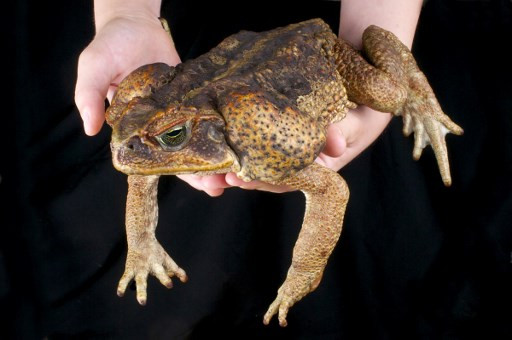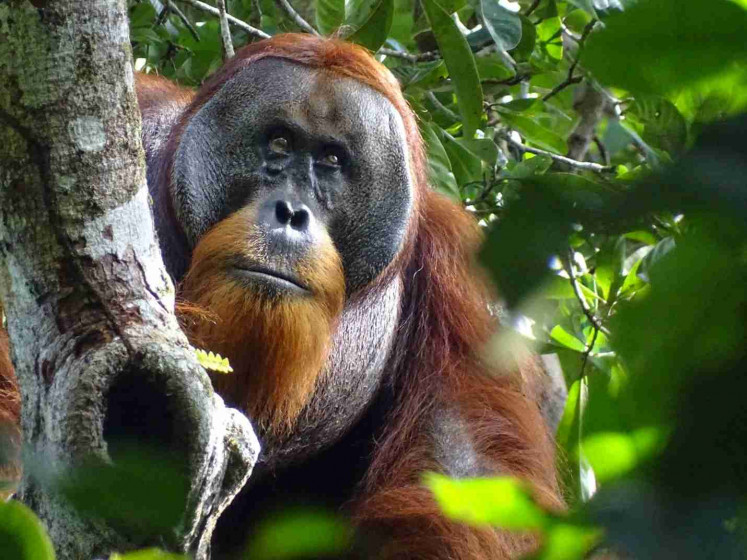International team of scientists to preserve Lake Titicaca giant frog
Change Size
 Undated handout photograph released by the Universidad Continental de Huancayo of a Lake Junin (giant) frog (Batrachophrynus macrostomus), a species considered endangered in Peru for being exposed to pollution and predation. - Investigators of the Continental University of Huancayo, in Peru, 310 kilometers east of Lima, found tadpoles of the species during an expedition conducted to record and evaluate the biodiversity in a wetland of the sanctuary of Chacamarca at 4,105 meters above sea level, in average temperatures of 3 degrees below zero. Adult frogs considered by experts unique in the world for its size and flavor can reach more than 50 centimeters in length and weight two kilos. (HO/Universidad Continental de Huancayo/AFP/-)
Undated handout photograph released by the Universidad Continental de Huancayo of a Lake Junin (giant) frog (Batrachophrynus macrostomus), a species considered endangered in Peru for being exposed to pollution and predation. - Investigators of the Continental University of Huancayo, in Peru, 310 kilometers east of Lima, found tadpoles of the species during an expedition conducted to record and evaluate the biodiversity in a wetland of the sanctuary of Chacamarca at 4,105 meters above sea level, in average temperatures of 3 degrees below zero. Adult frogs considered by experts unique in the world for its size and flavor can reach more than 50 centimeters in length and weight two kilos. (HO/Universidad Continental de Huancayo/AFP/-)
A
n international team of scientific institutions will join forces to preserve the future of the Lake Titicaca giant frog, an endangered species, Bolivia's natural history museum said.
"In a coordinated effort, a cross-border team has been formed for the conservation and study of the emblematic Titicaca water frog [Telmatobius coleus] with the vision for the species' long-term future," the La Paz-based Museum of Natural History said in a statement sent to AFP.
The team is made up of organizations from several countries, including Bolivia's Natural History Museum "Alcide d'Orbigny," Peru's Cayetano Heredia University and environmental NGO NaturalWay, the Denver Zoo in Colorado and the Zoology Museum at the Pontifical Catholic University of Ecuador.
The mission also has the backing of the United Nations and the Global Environment Facility (GEF).
The Lake Titicaca water frog is the world's largest aquatic amphibian, growing up to six inches long (145 millimeters). It can even grow as long as 20 inches, according to a 1970 report by legendary French scientist Jacques Yves Cousteau.
The frog lives at depths of up to 100 meters.
It is characterized by its soft, loose skin that resembles a sack with detached folds, allowing it to breathe in the water of Lake Titicaca, which are more than two miles (3,800 meters) above sea level, as well as some surrounding waters in La Paz and Puno, Peru.
The water frog is considered critically endangered, threatened by the overexploitation of the species for culinary purposes, ritual uses and the use of its skin for leather production.
It is also threatened by high levels of water pollution in Lake Titicaca, which has produced infectious diseases that negatively affect amphibian populations.
Your Opinion Matters
Share your experiences, suggestions, and any issues you've encountered on The Jakarta Post. We're here to listen.
Thank you
Thank you for sharing your thoughts. We appreciate your feedback.









